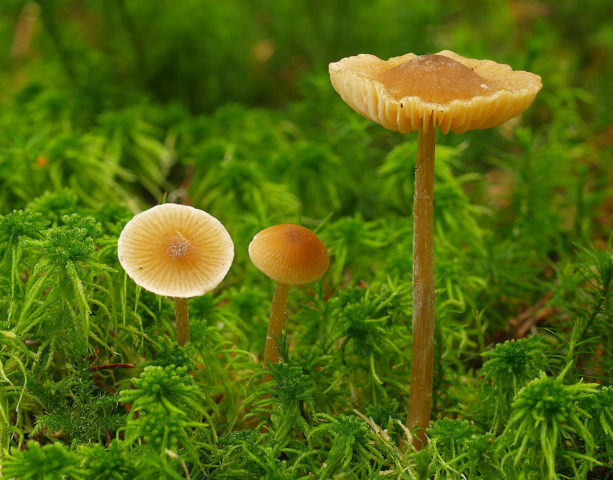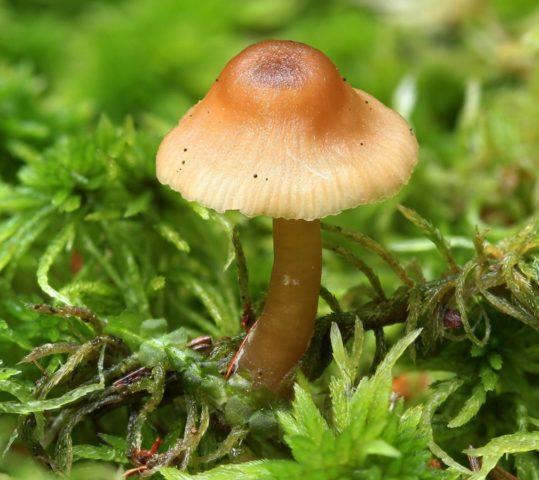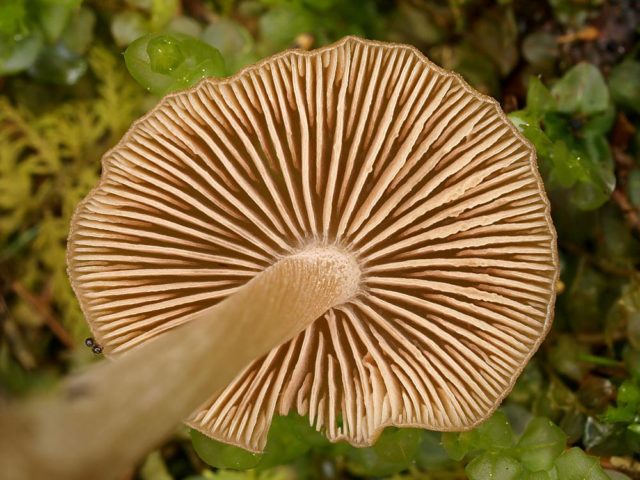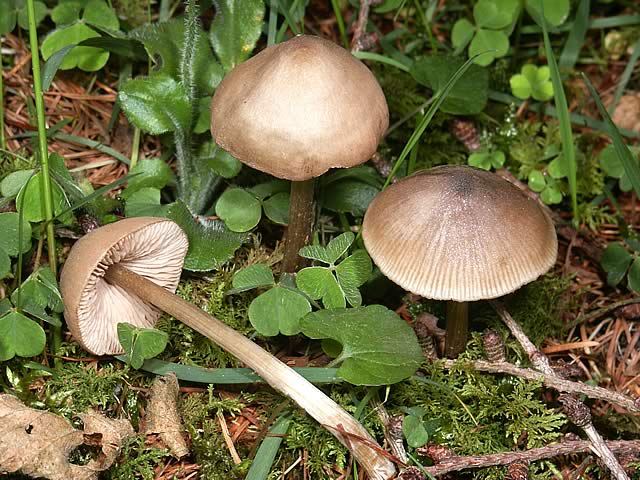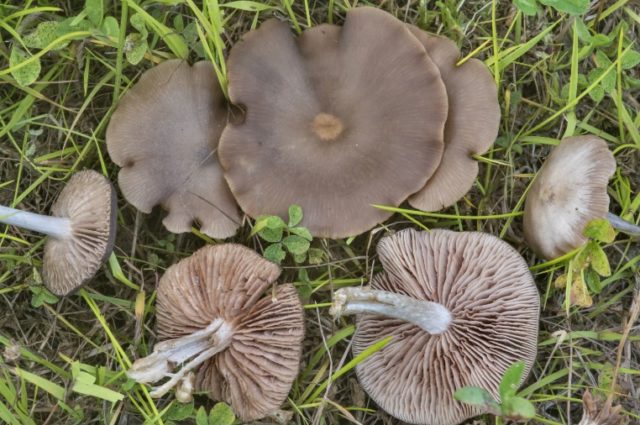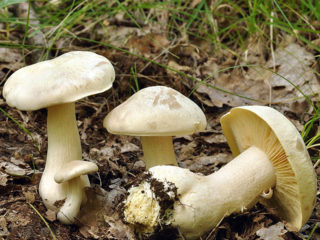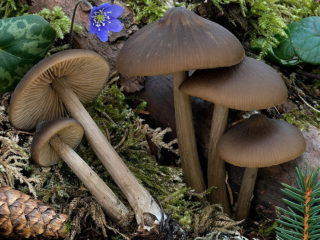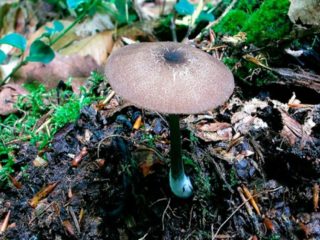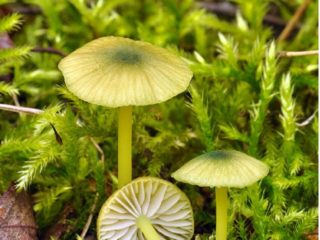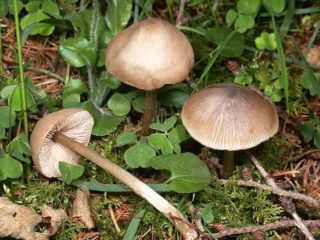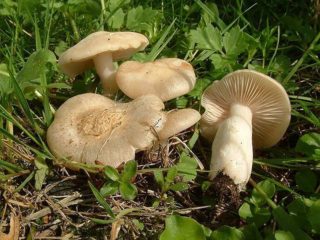Content
Entoloma shield is a dangerous mushroom that causes poisoning if it enters the body. It is found in Russia in places with high humidity and fertile soil. Entoloma can be distinguished from its twins by characteristic features.
What does Entoloma shielda look like?
The variety belongs to the lamellar mushrooms of the Entoloma genus. The fruiting body includes a cap and a stalk.
Description of the cap
The hat is from 2 to 4 cm in size. Its shape resembles a cone or bell. As the fruiting body grows, the cap becomes flatter and the edges curve downward.The surface is smooth, the color is brown with a yellow or gray undertone. The pulp has a similar color.
The plates are sparse, convex, smooth or wavy along the edges. The color is light, ocher, gradually acquiring a pink tint. Some plates are small and do not reach the stem.
Description of the leg
The leg of the shield-bearing species is from 3 to 10 cm high. Its diameter is 1-3 mm. The shape is cylindrical, with an extension at the base. The inside of the leg is hollow and breaks easily. The color does not differ from the cap.
Is the mushroom edible or not?
Entoloma shield is a poisonous species. The pulp contains harmful toxins. When they enter the human body they cause poisoning. Toxic substances persist even after heat treatment. Therefore, collecting this mushroom and consuming it in any form is unacceptable.
Symptoms of poisoning, first aid
After consuming entoloma, the following symptoms are observed:
- stomach pain;
- nausea, vomiting;
- diarrhea;
- weakness, dizziness.
If such signs appear, it is recommended to consult a doctor. The victim's stomach is washed and given activated carbon or another sorbent. In case of serious poisoning, recovery takes place in an inpatient hospital. The victim is provided with rest, prescribed a diet and plenty of fluids.
Where and how does it grow
The species is found in humid forests. Fruiting bodies appear in mixed and coniferous forests. These are areas next to larches, spruces, cedars, and pines.
The fruiting period is from late May to late autumn. Fruiting bodies grow singly or in small groups.On the territory of Russia they are found in the middle zone, in the Urals and Siberia.
Doubles and their differences
The shield-bearing entoloma has counterparts that are similar to it in appearance:
- Entoloma collected. An inedible mushroom with a brown or reddish cap. There are also white or pinkish plates. The shield-bearing species has a predominant yellow color.
- Entoloma silky. A conditionally edible variety that is eaten. The pulp is first boiled and then pickled or salted. The species is found on the edges and clearings among grass. Fruiting from late summer to autumn. The differences from the shield-bearing variety are in the color of the cap. The shield-bearing mushroom has a brown color, pleasant to the touch, without yellow tones. An important nuance is that the edible species has a darker stem than the cap.
Conclusion
Entoloma shield contains toxins that are poisonous to humans. The species prefers moist areas near coniferous and deciduous trees. It can be easily distinguished from edible species by a number of characteristics.
